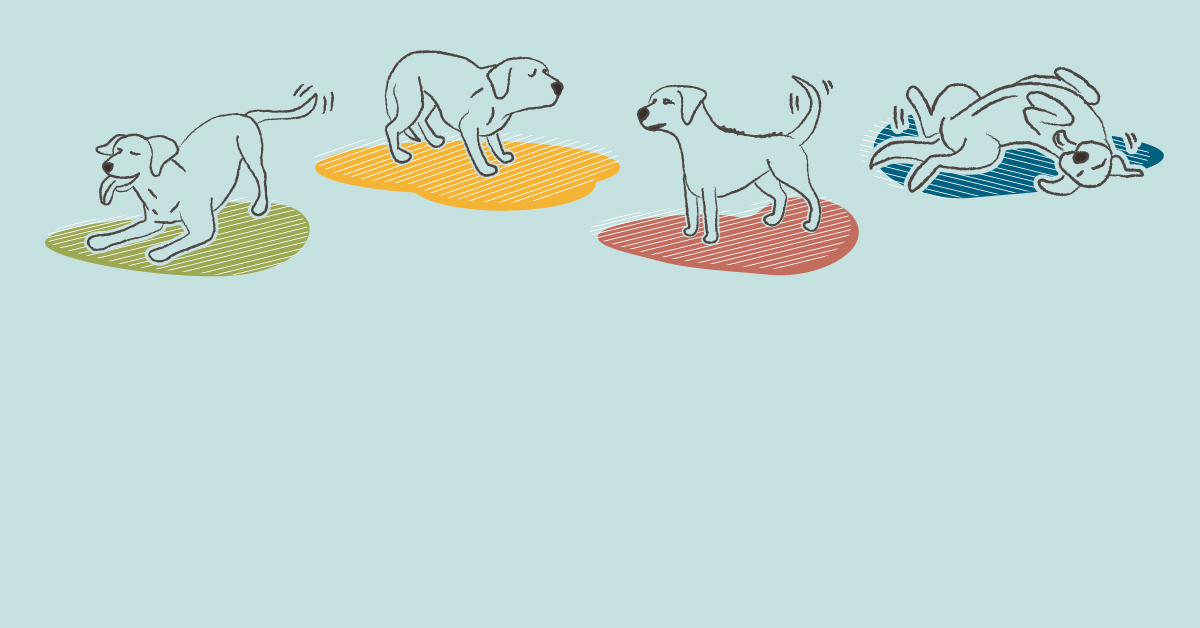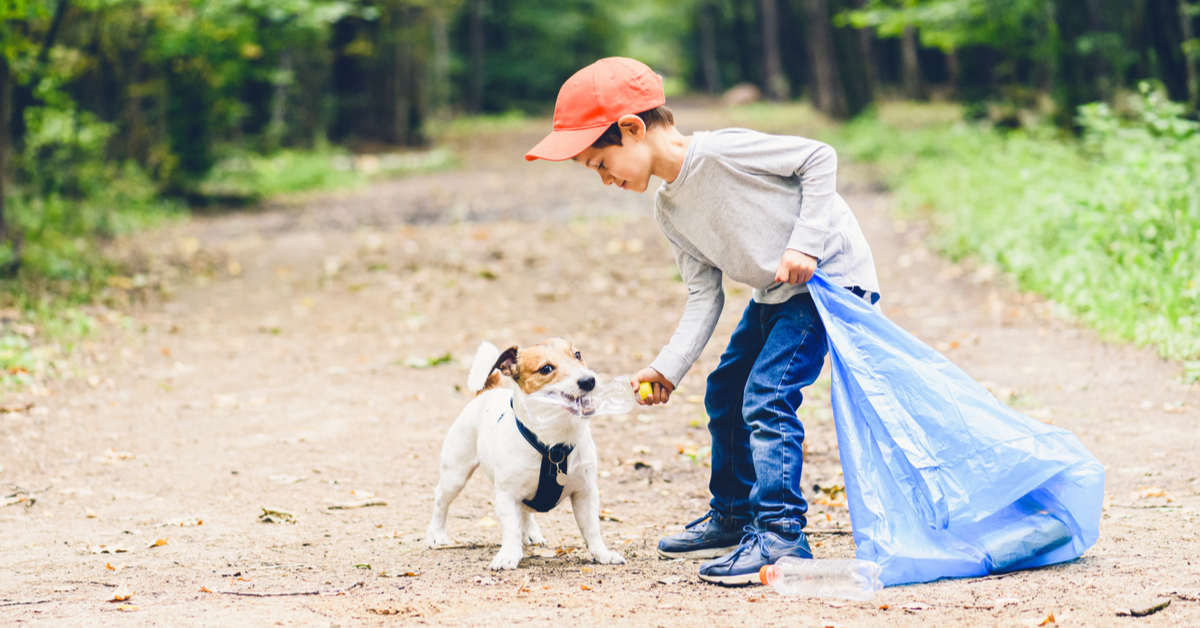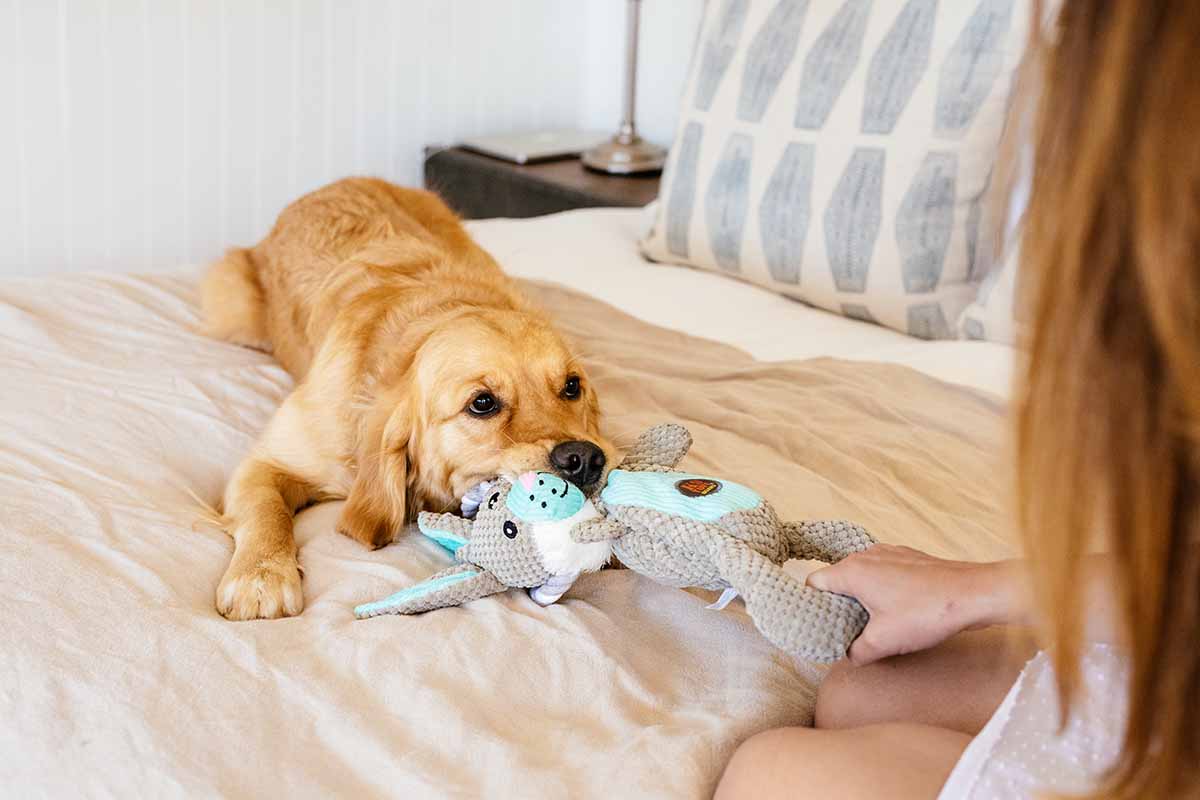What Is Resource Guarding?
Resource guarding in dogs manifests in body language that indicates possessiveness over things like kibble, toys, or other high-value items or spaces — even their humans. It is a physiological response that makes sense on a primal level, biological programming that made sense when resources such as food, territory, and shelter were hard to come by and maintain.
Although the domesticated dog does not have to worry so much about survival anymore, it can be challenging to overcome those gut instincts that were passed down for millions of years.
Dog owners often see this type of guarding behavior around mealtime when their dog is “protecting” their food bowl, but there are many other times and circumstances outside of food guarding where resource guarding may be an issue for some dogs.
They can even be protective over less tangible things, such as a particular scent that they are smelling in the corner of the yard. In this case, your dog may growl when someone or something else comes near to investigate.
Signs of Resource Guarding in Dogs

Pay attention to your dog’s body language. Signs of resource guarding can include growling and snarling as well as stiffening when you get close to your dog’s food bowl or the item/space they are trying to protect. If you get too close or push their boundaries too far, they may lash out. They could lunge at you as a show of force or potentially making contact and biting.
Unfortunately, this type of aggressive behavior isn’t always a phase. When your new dog guards items, it can point to some serious and dangerous behavior issues. The underlying anxiety must be dealt with directly, and carefully before the behavior will go away.
A dog may display aggressive resource guarding behavior only to family members (people), only to other dogs, or to both. In some cases, an aggressive dog may only resource guard against other dogs and small children but not bigger kids or adults.
If you are concerned with your dog’s behavior when it comes to the over-protectiveness of food, special treats, favorite toys, or other high-value things, you must proceed cautiously to resolve these behavioral issues safely and effectively. It’s going to take time to stop resource guarding.
Dangers of Incorrectly Dealing With Your Dog’s Resource Guarding

Unlike teaching your dog fun tricks or not to potty inside, trying to condition your dog out of resource guarding can be double dangerous. Sometimes you can actually make things worse instead of better.
For one, if you are only treating the symptoms, then you might be simply removing the warning signs, leaving the underlying issue to lurk beneath a thinly veiled surface.
For example, if you try to fix your dog’s food aggression by conditioning them not to growl if you pet them as they eat, you are not doing anything about the underlying anxiety that was the cause of the behavior. You’ve only conditioned them not to growl when they feel threatened.
Without the warning signals such as growling, your dog may show no sign of insecurity or irritation before they lunge and attack to protect themselves. This type of behavior modification, just suppressing the negative emotional response that your dog has when they feel its resources are threatened, is ultimately ineffective.
Another example of ineffective conditioning is focusing too much on negative reinforcement. Consider when your dog is being overprotective of something and you demand that they “drop it”. Especially if this is a command they only hear in negative contexts, you can unintentionally reinforce the negative emotions by validating their fear of having what they are protecting taken away.
Therefore, it is important to work on counter-conditioning to focus on the positive instead, like using the same cue that you do while playing fetch to convince them to release the item.
If it sounds like riding a thin line, you are correct. This type of desensitization can be challenging to achieve effectively.
Sometimes it can be difficult to know when you are masking the problem instead of actually helping to treat it.
What to Do If Your Dog Is (or Is Becoming) a Resource Guarder

When your adult dog or new puppy starts showing signs of resource guarding, it is important to act fast. A puppy who is prone to guard food at an early age is unlikely to “just grow out of it”. Chances are, they will continue to resource guard and their behavior trouble will only become worse over time.
As mentioned above, it can be tricky to treat the problem without unintentionally making it worse.
If your dog is a serious resource guarder, you may want to seek out professional help from an animal behaviorist sooner rather than later. Signing up for training classes or hiring a dog trainer can only help to provide you with an actionable plan to effectively curb this canine behavior.
Searching for a professional trainer or dog training program that focuses on positive reinforcement and redirection is often effective for resource guarding.
Rather than sheer force of will and intimidation, you should be encouraged to find ways to mediate their behavior, such as utilizing a tether or placing them in a separate room for a period of time when you have company over.
A professional dog trainer can also offer suggestions for redirecting your dog’s energy and anxiety in resource guarding situations. For example, teaching them to grab a pillow when the doorbell rings instead of yelling at them not to bark.
A cohesive plan to prevent resource guarding is only as effective as it is applied. As a result, you will need a combined effort from everyone in the household. If only some members are taking the rules seriously, then the confusion created by a lax member of the team can create enough doubt and confusion to undermine the whole project.
Additional Resources
For more information on the concept of resource guarding and how to train your dog out of it, the book “Mine” by prominent veterinary behaviorist Jean Donaldson is an excellent resource for further study and training techniques.

